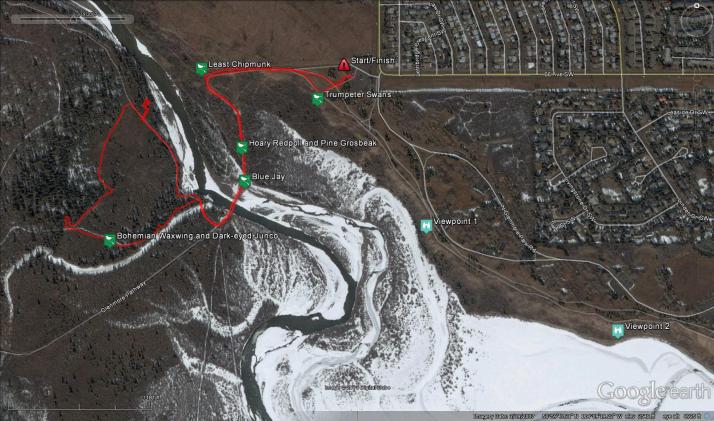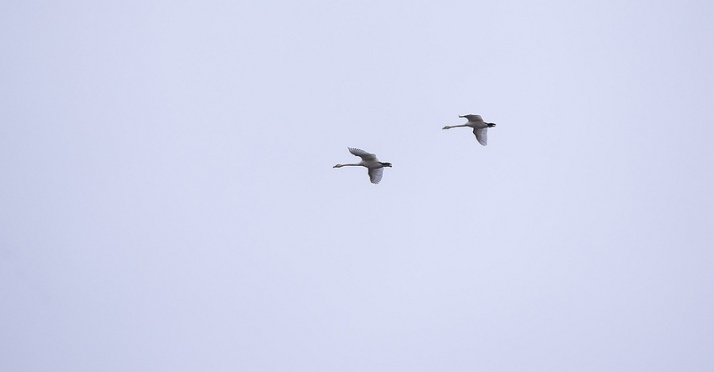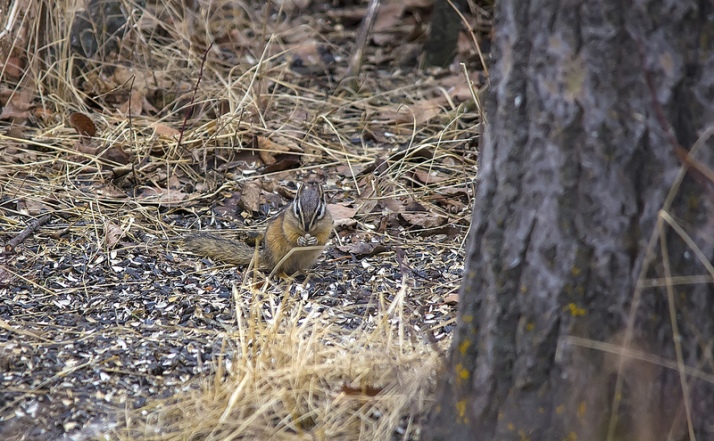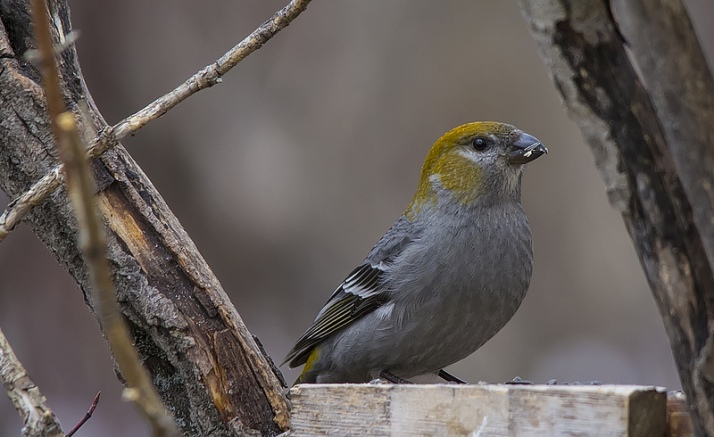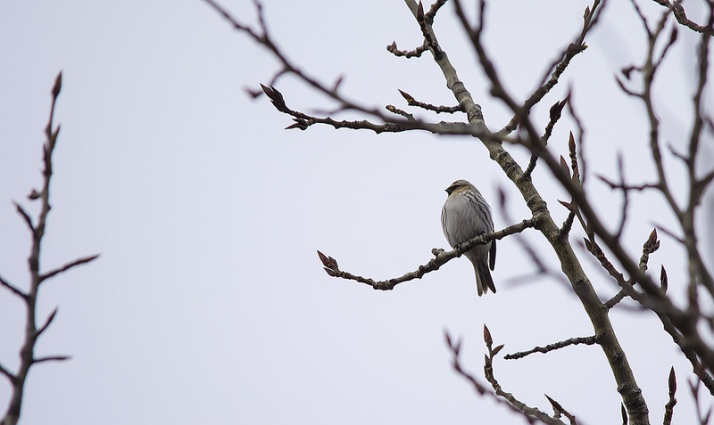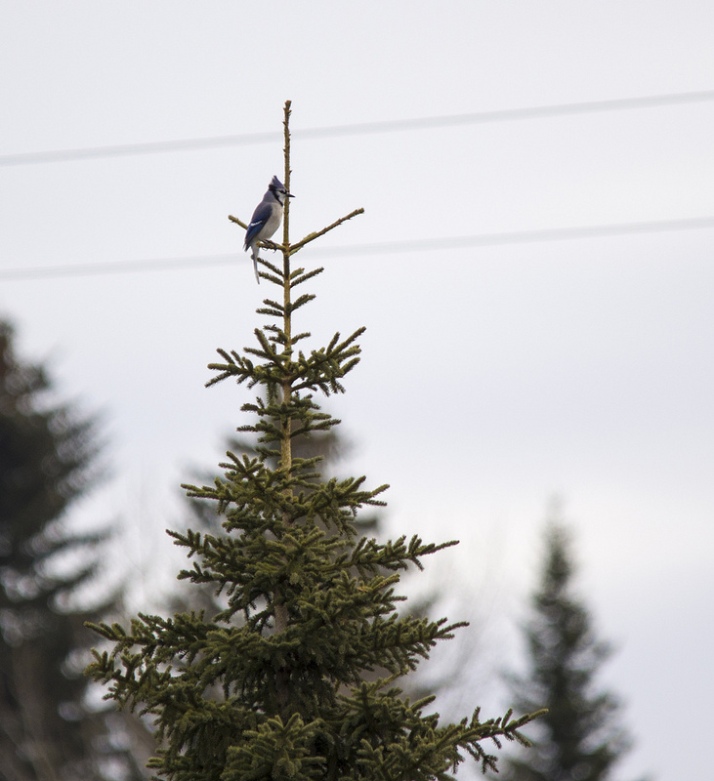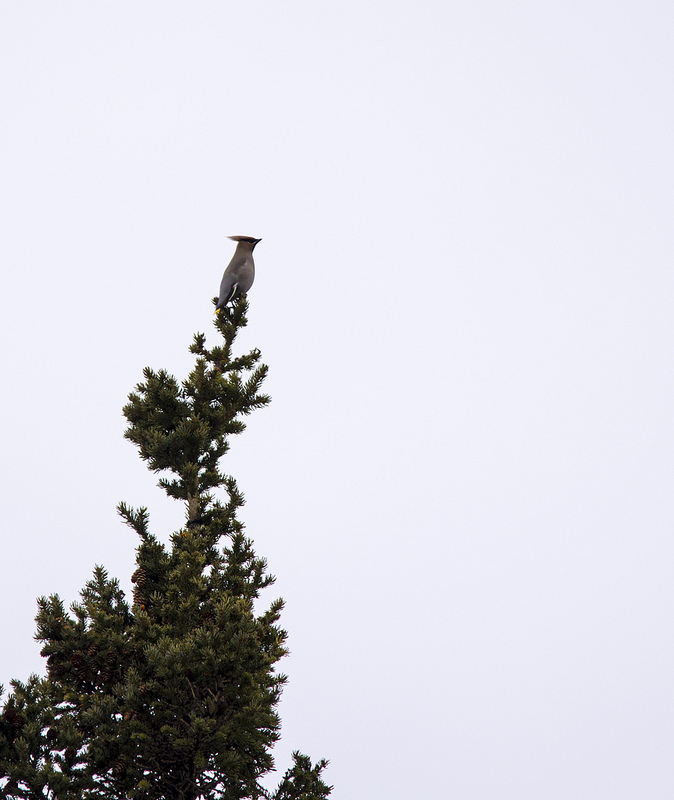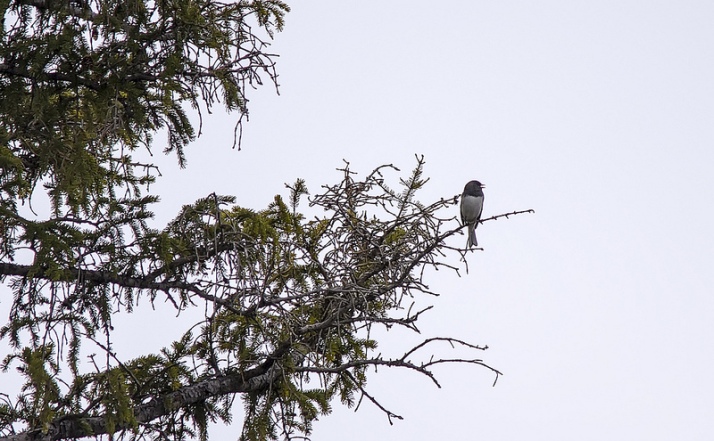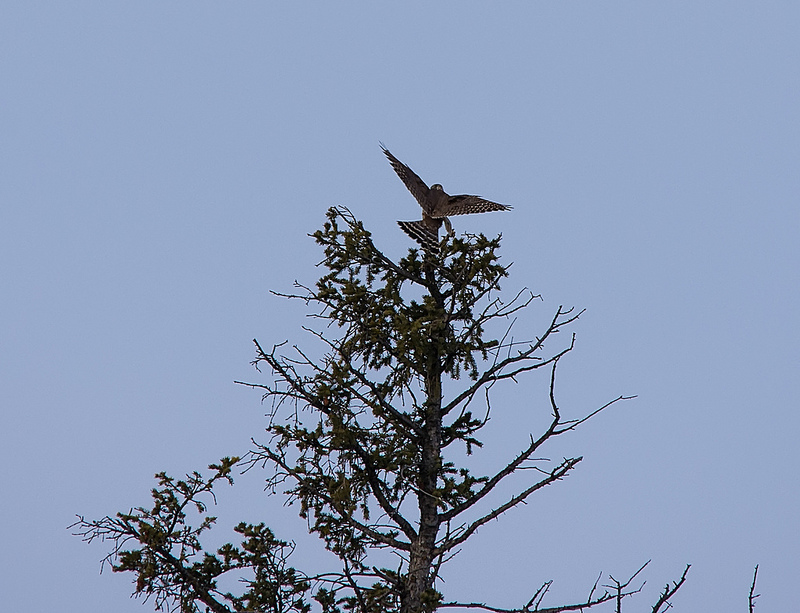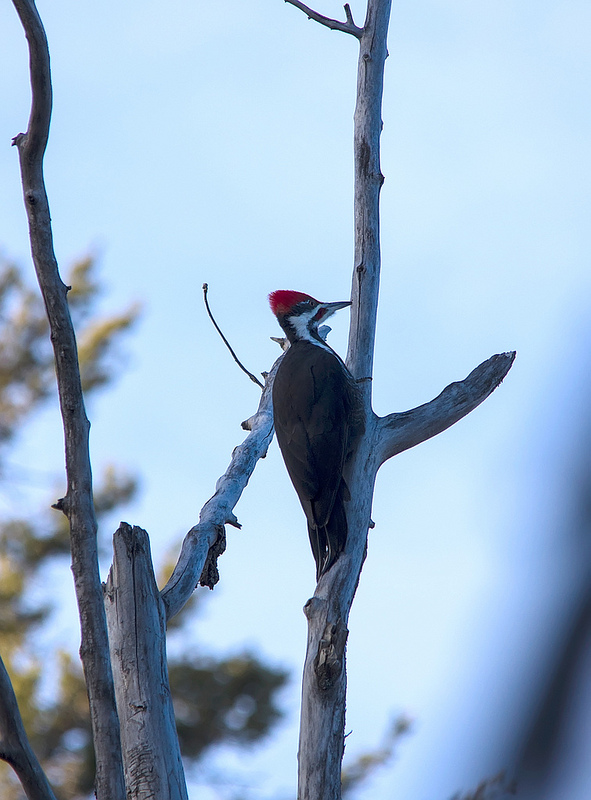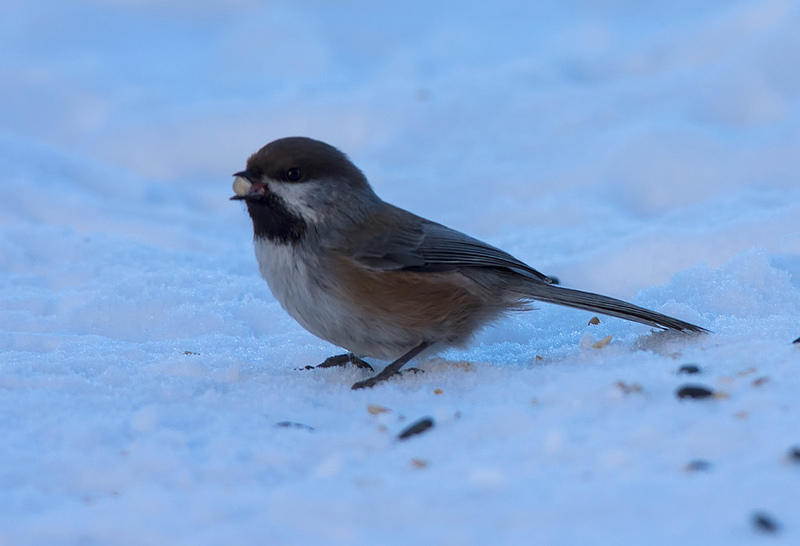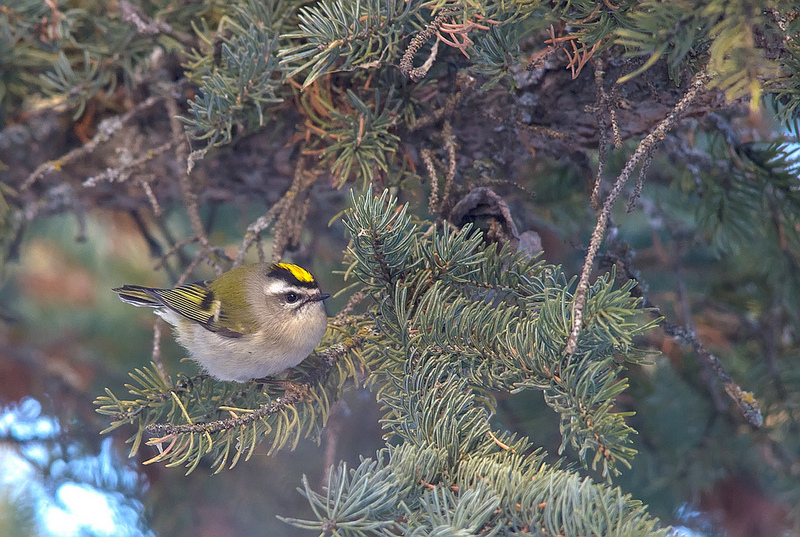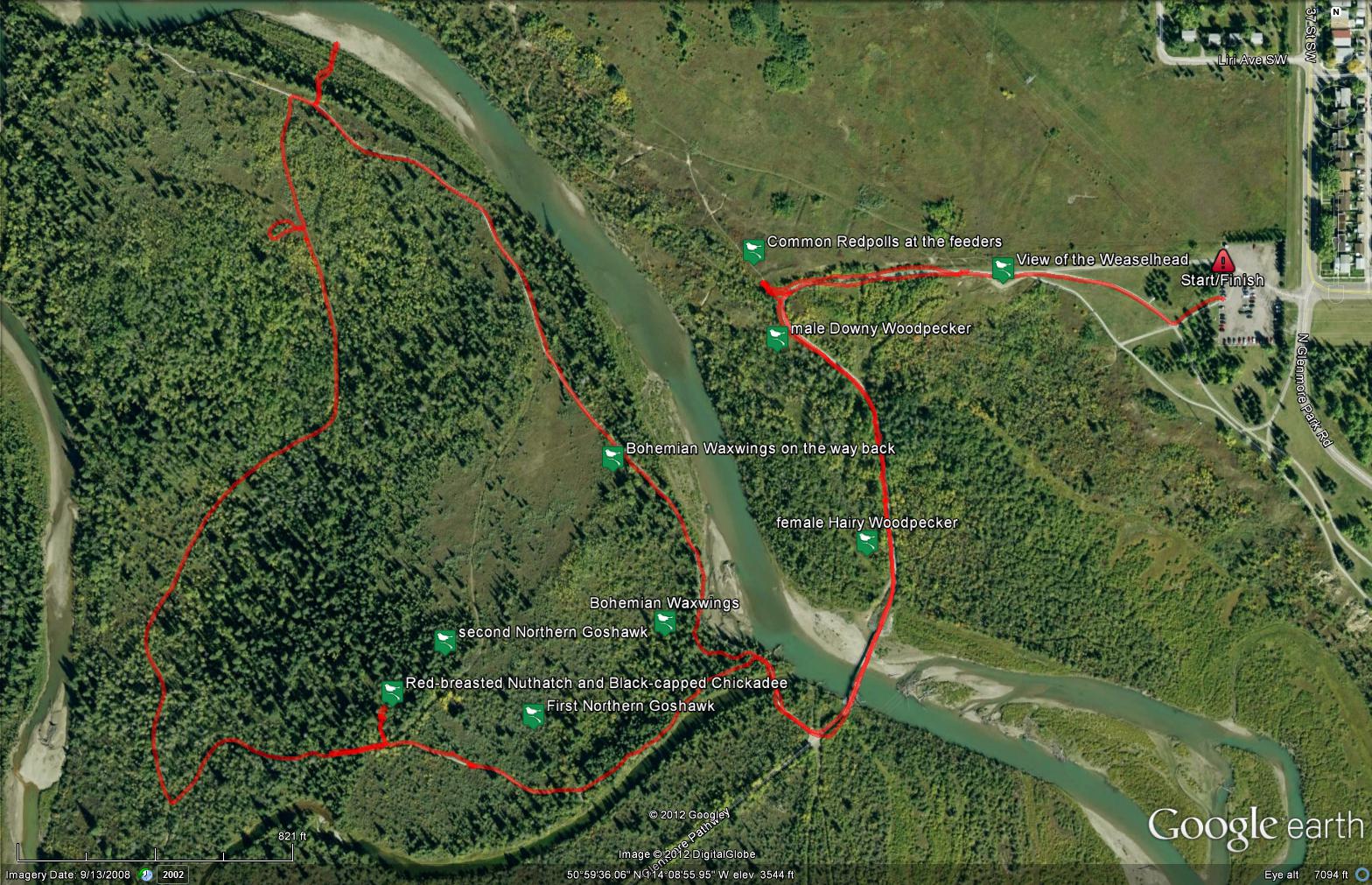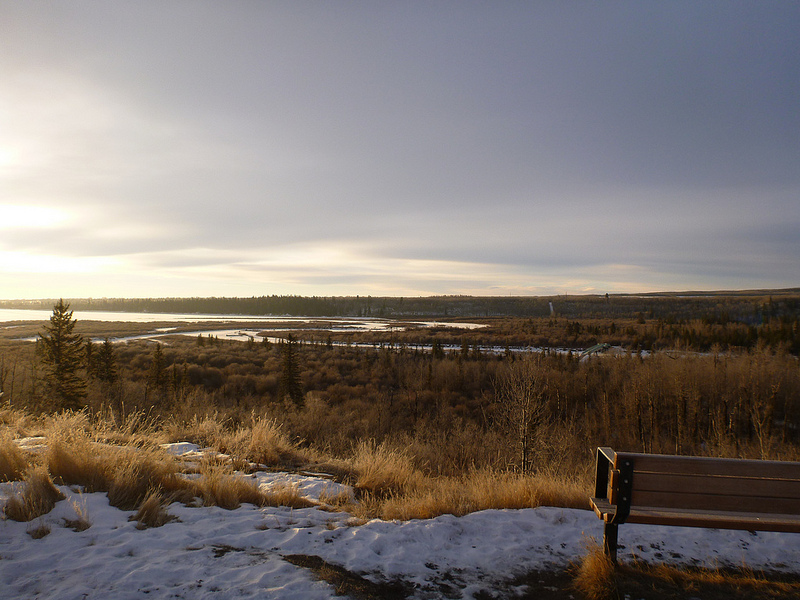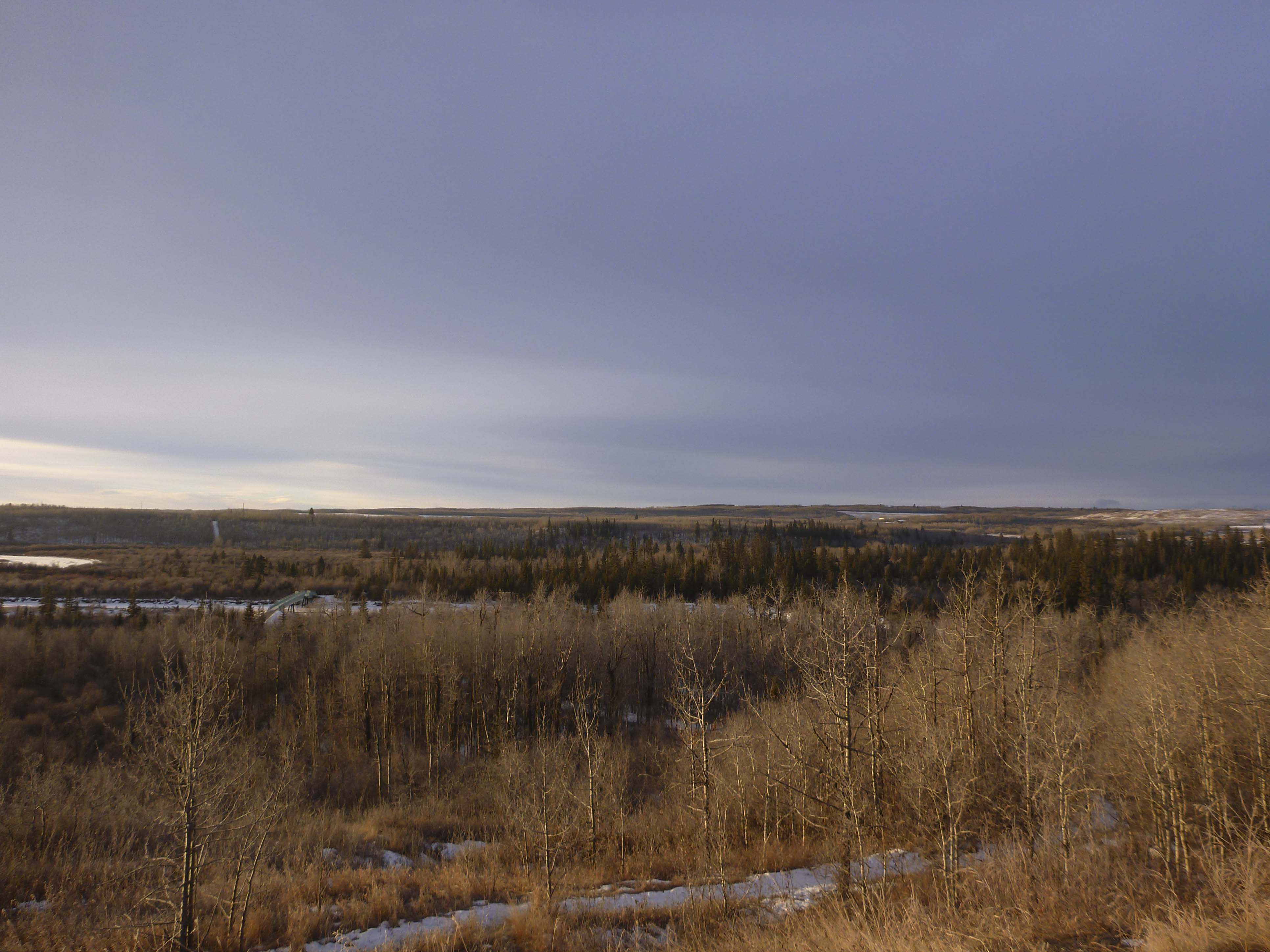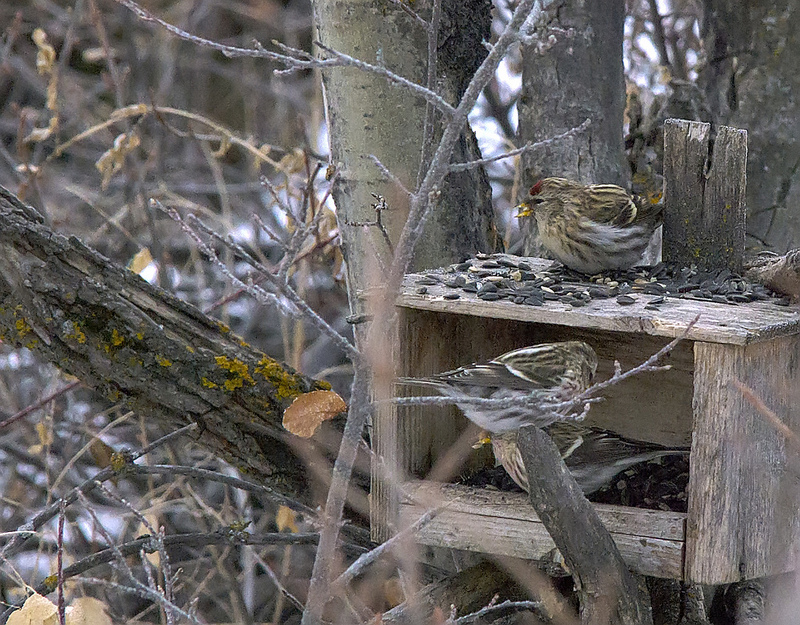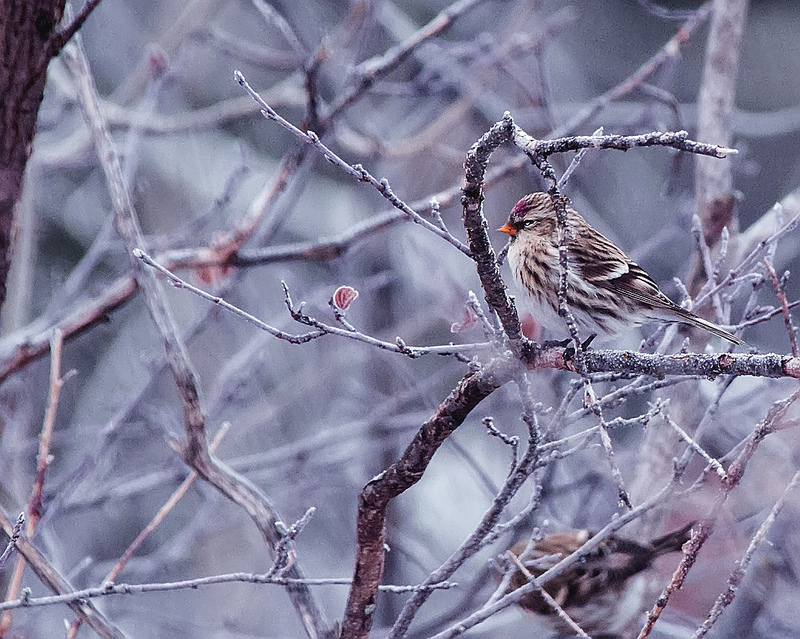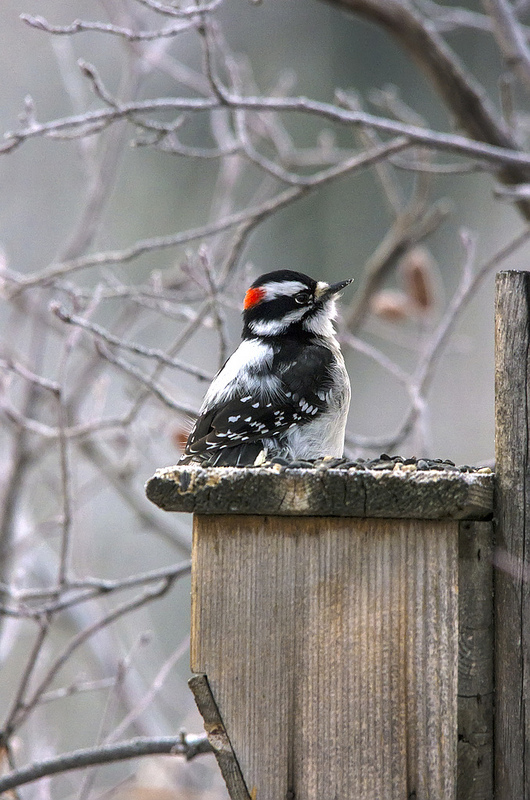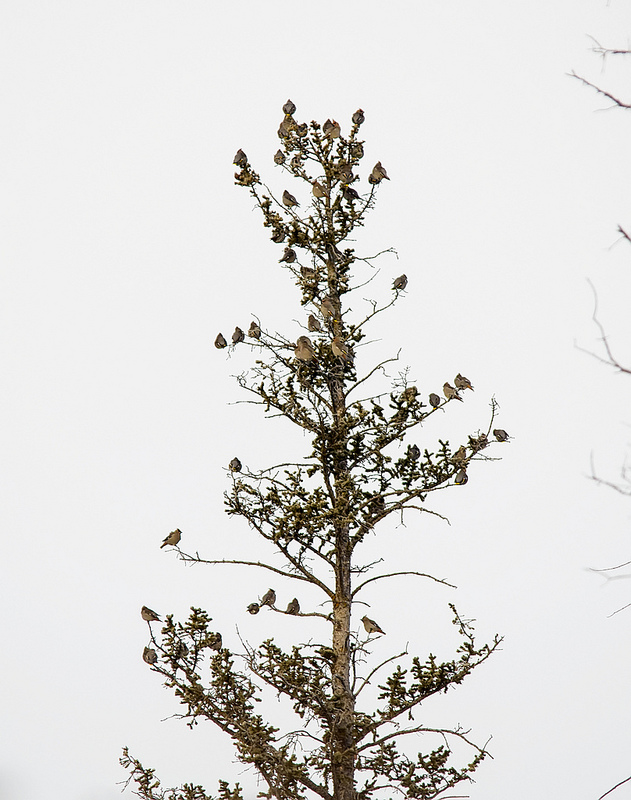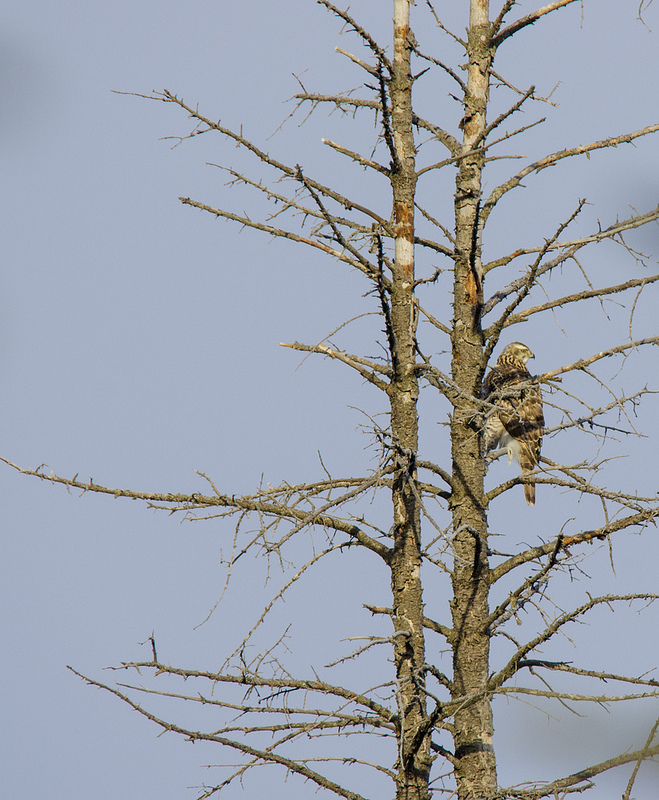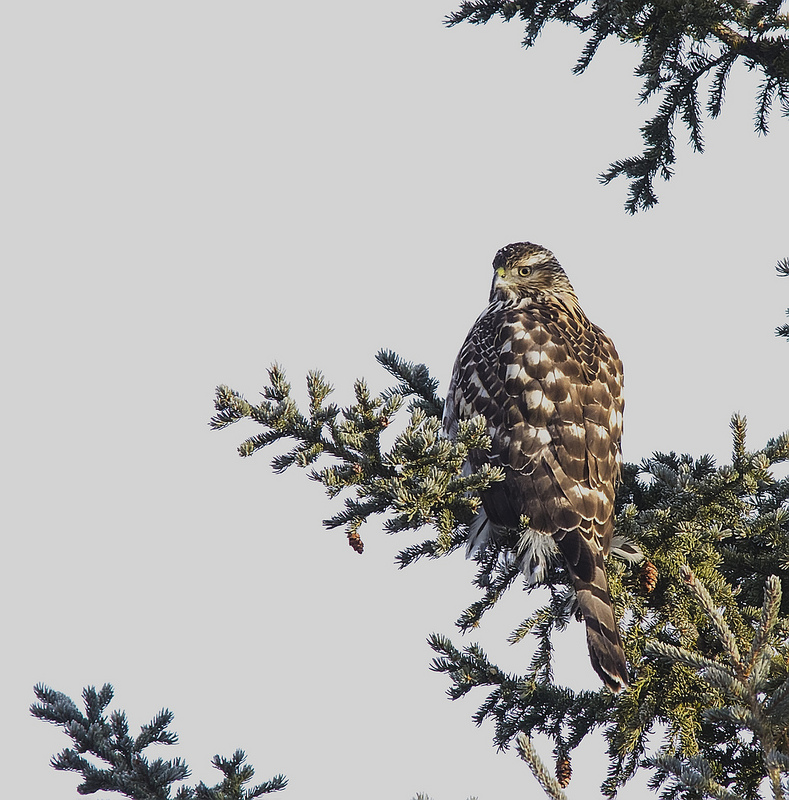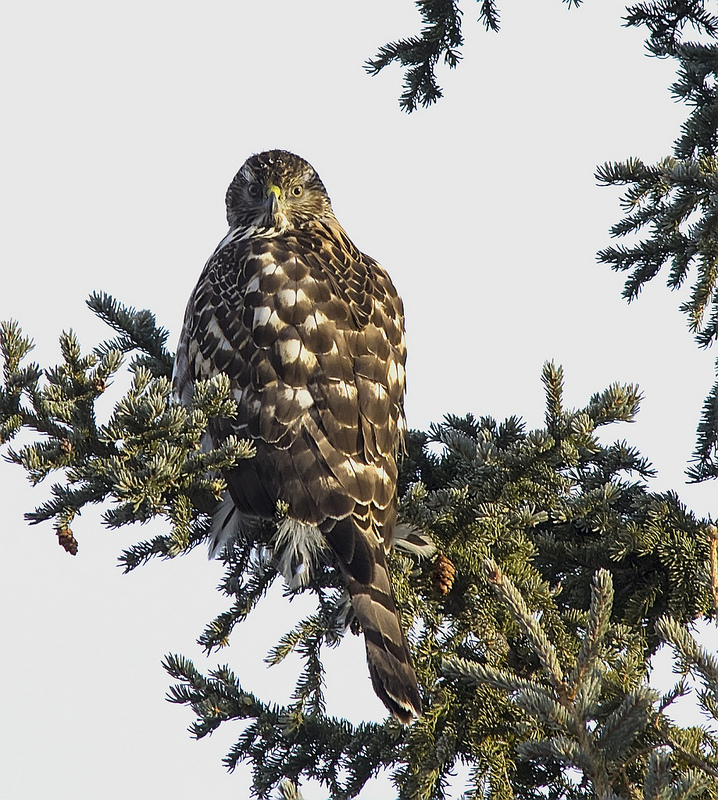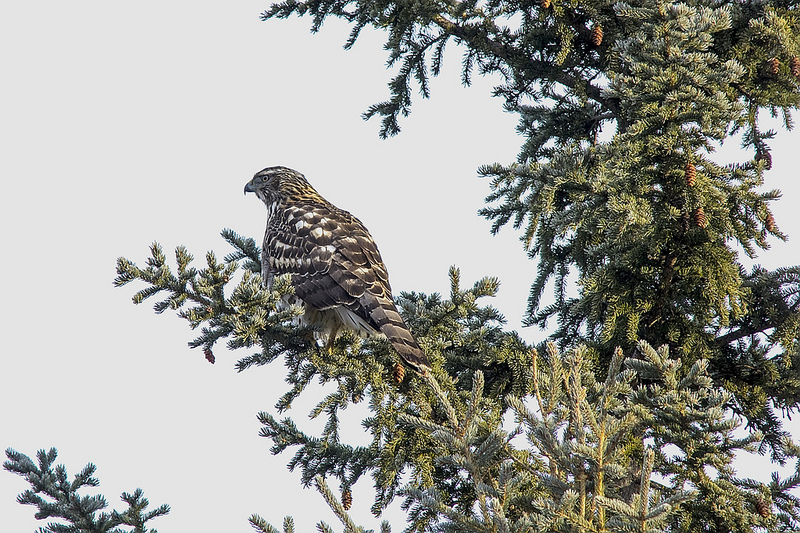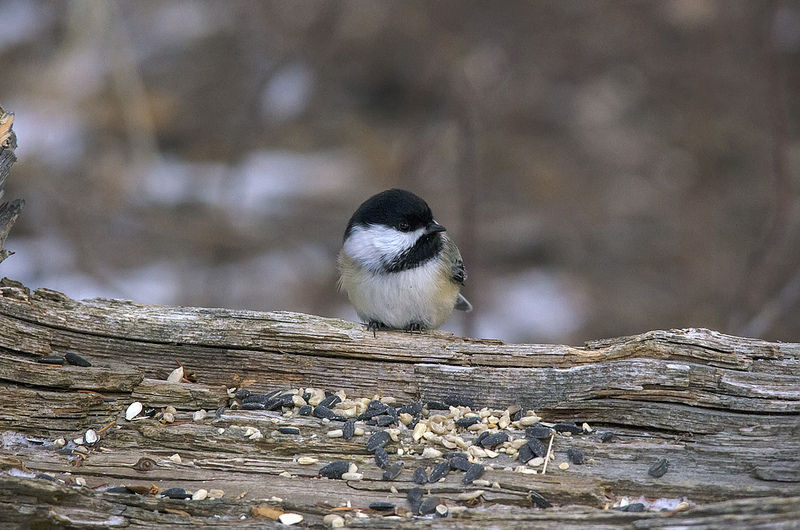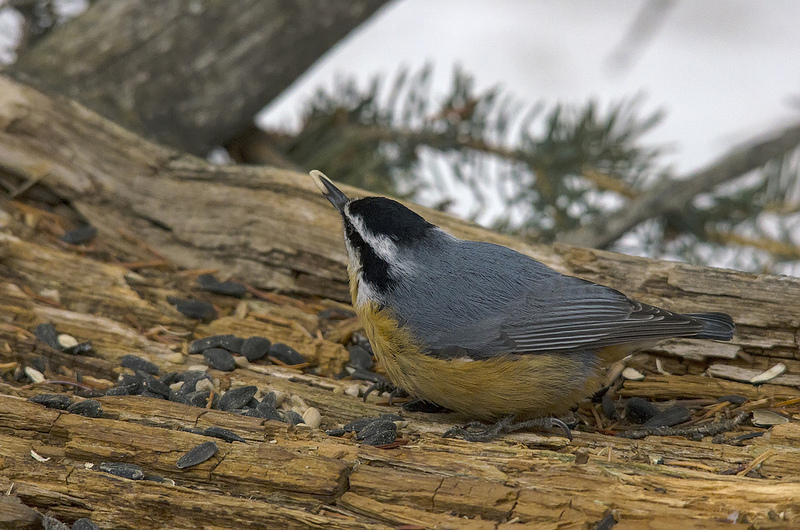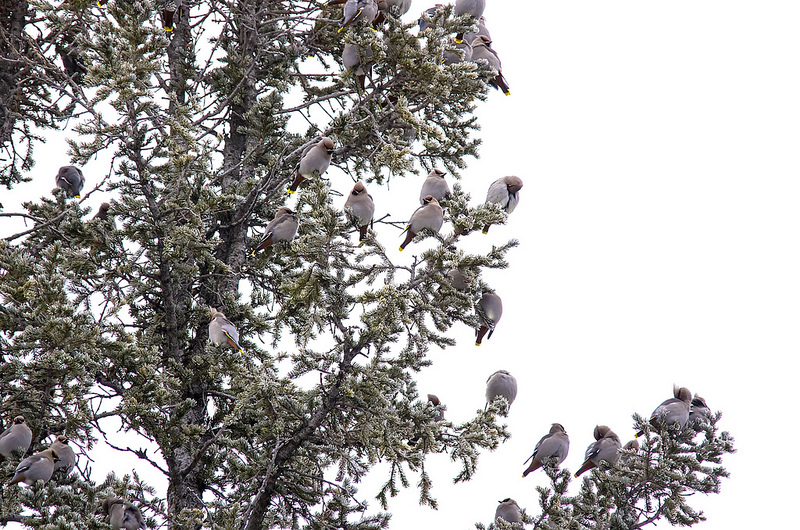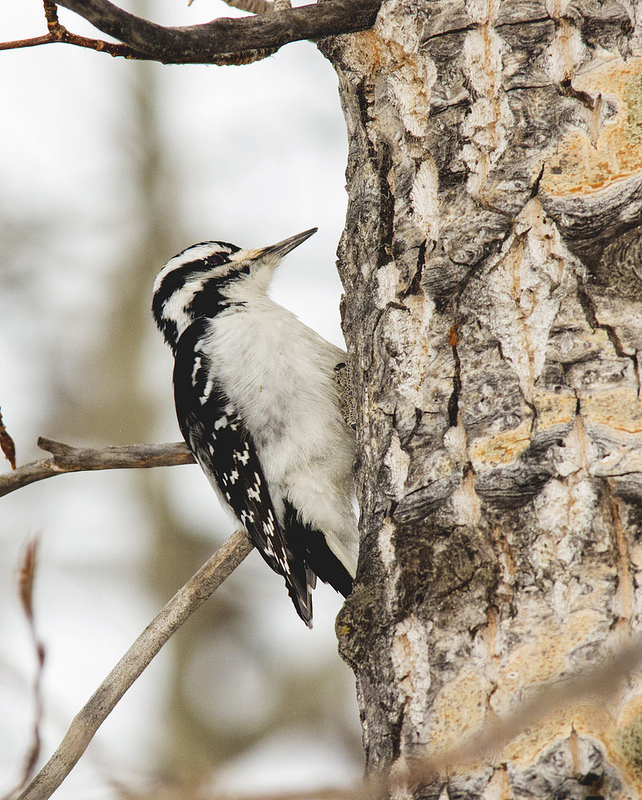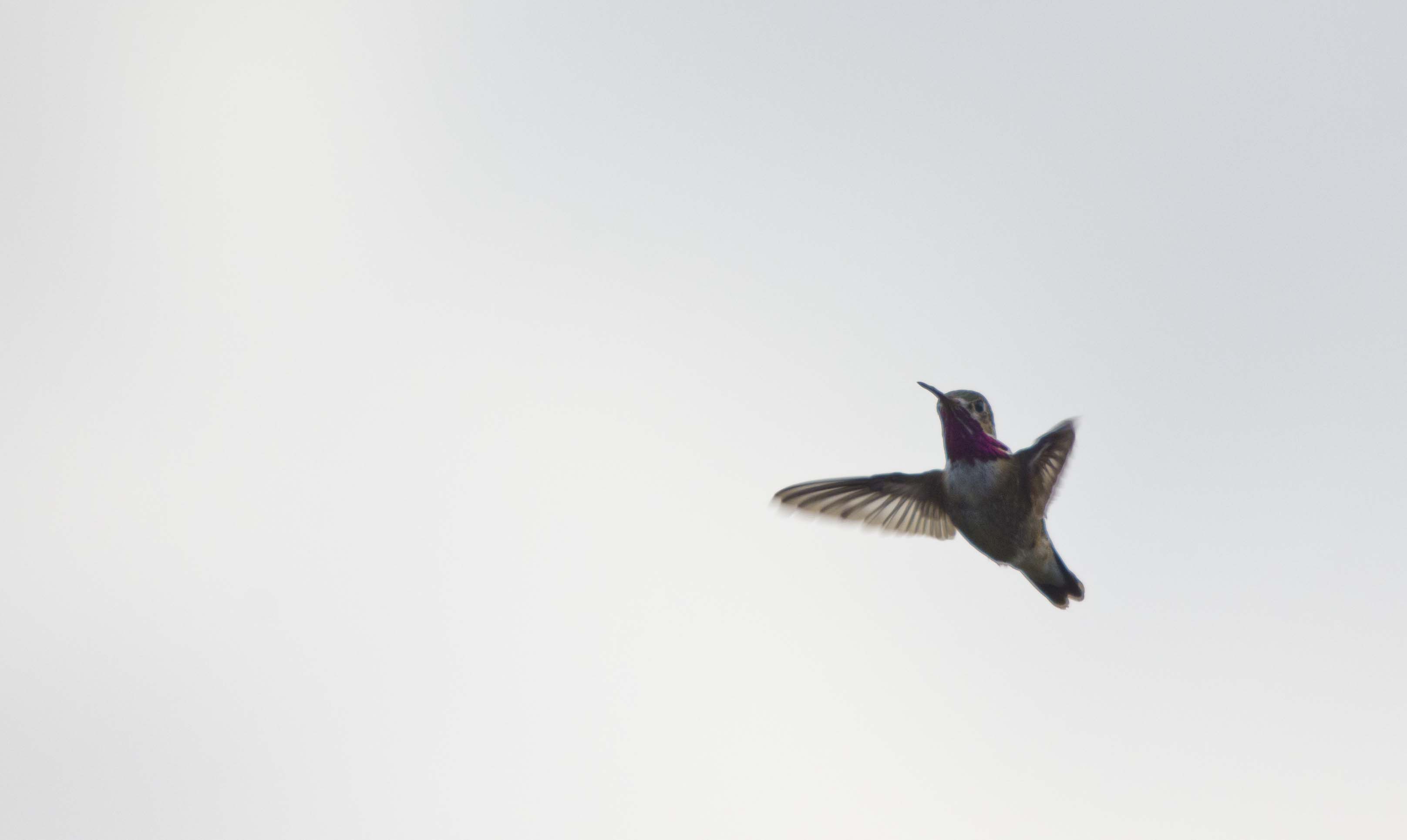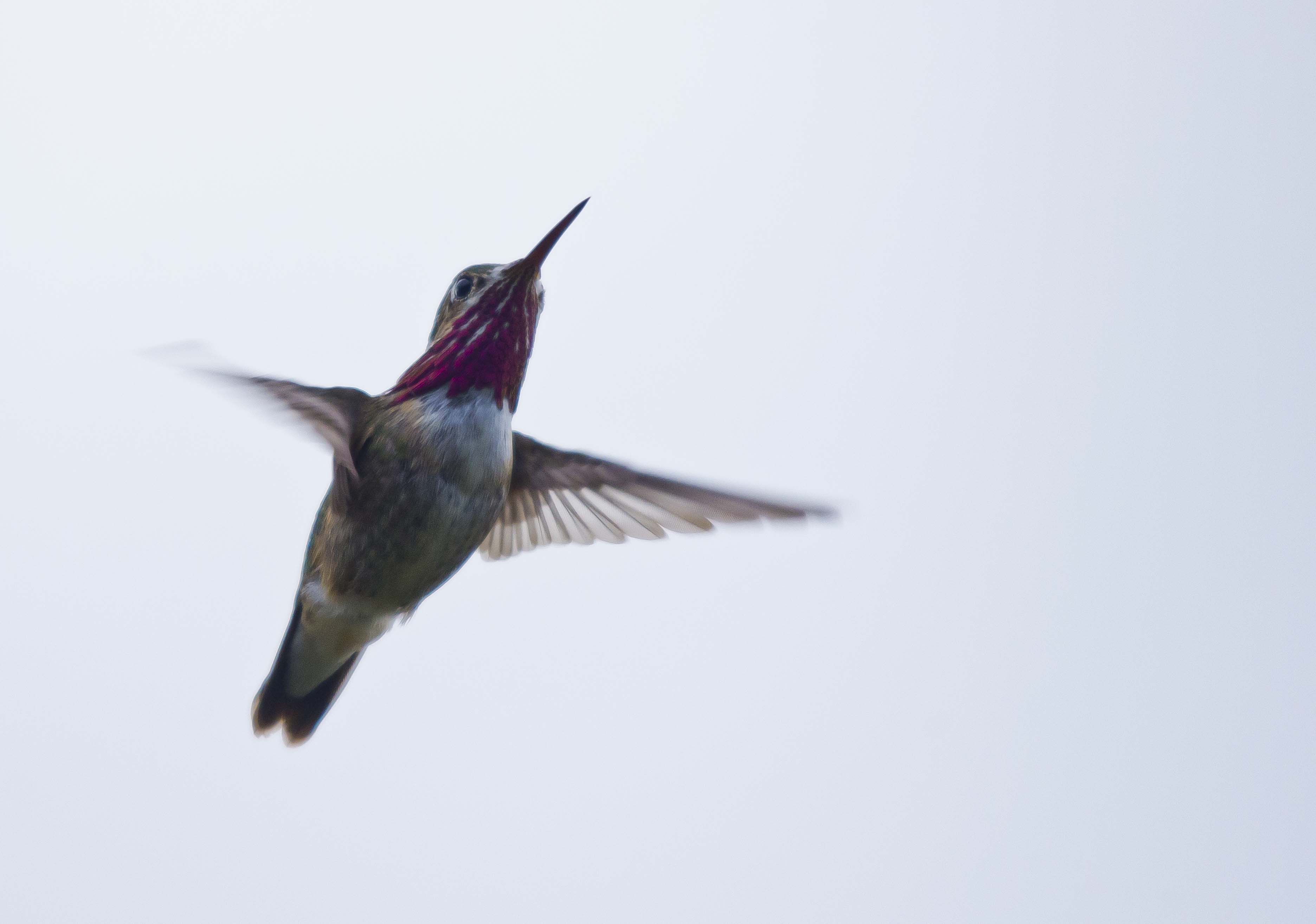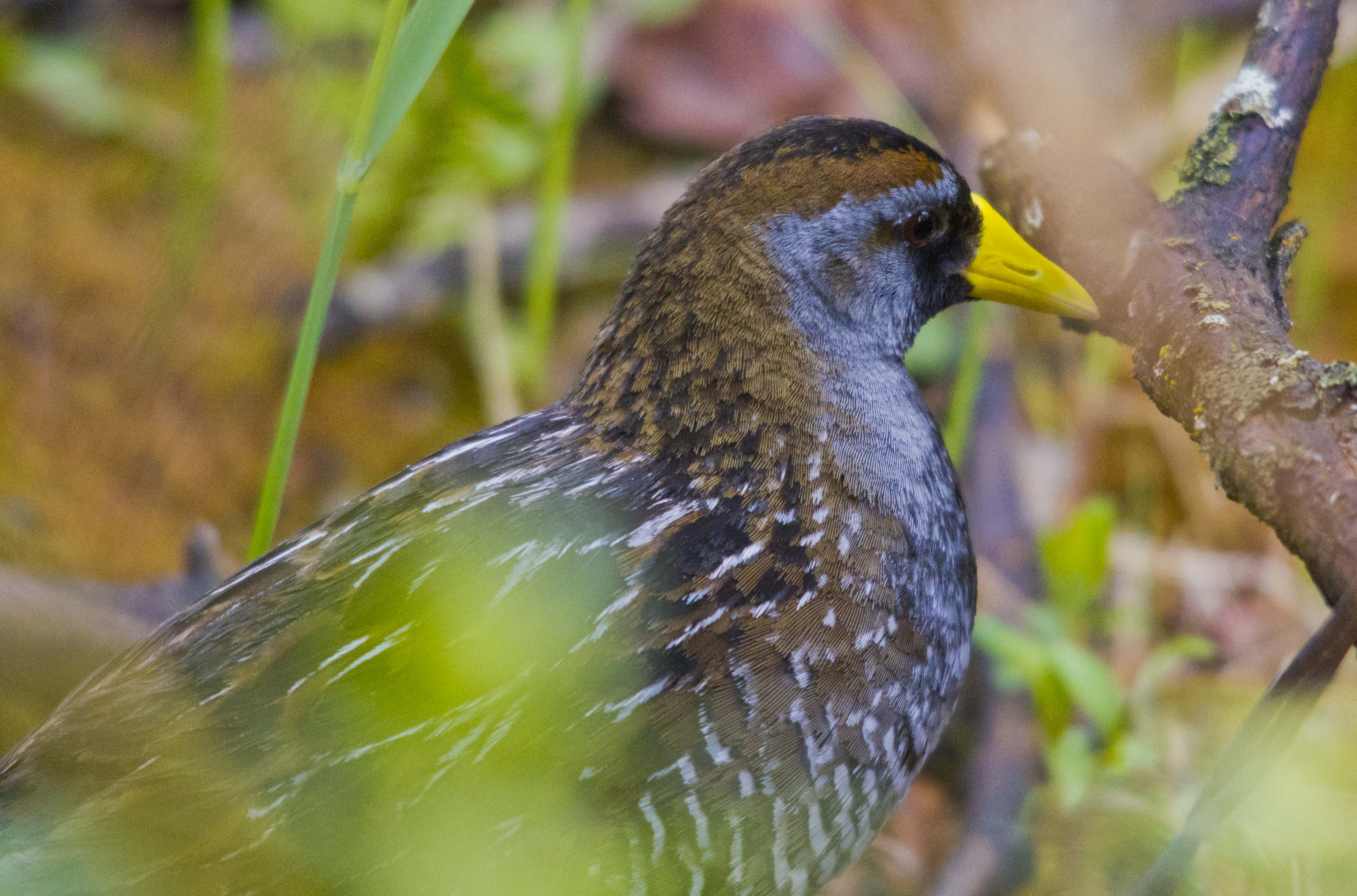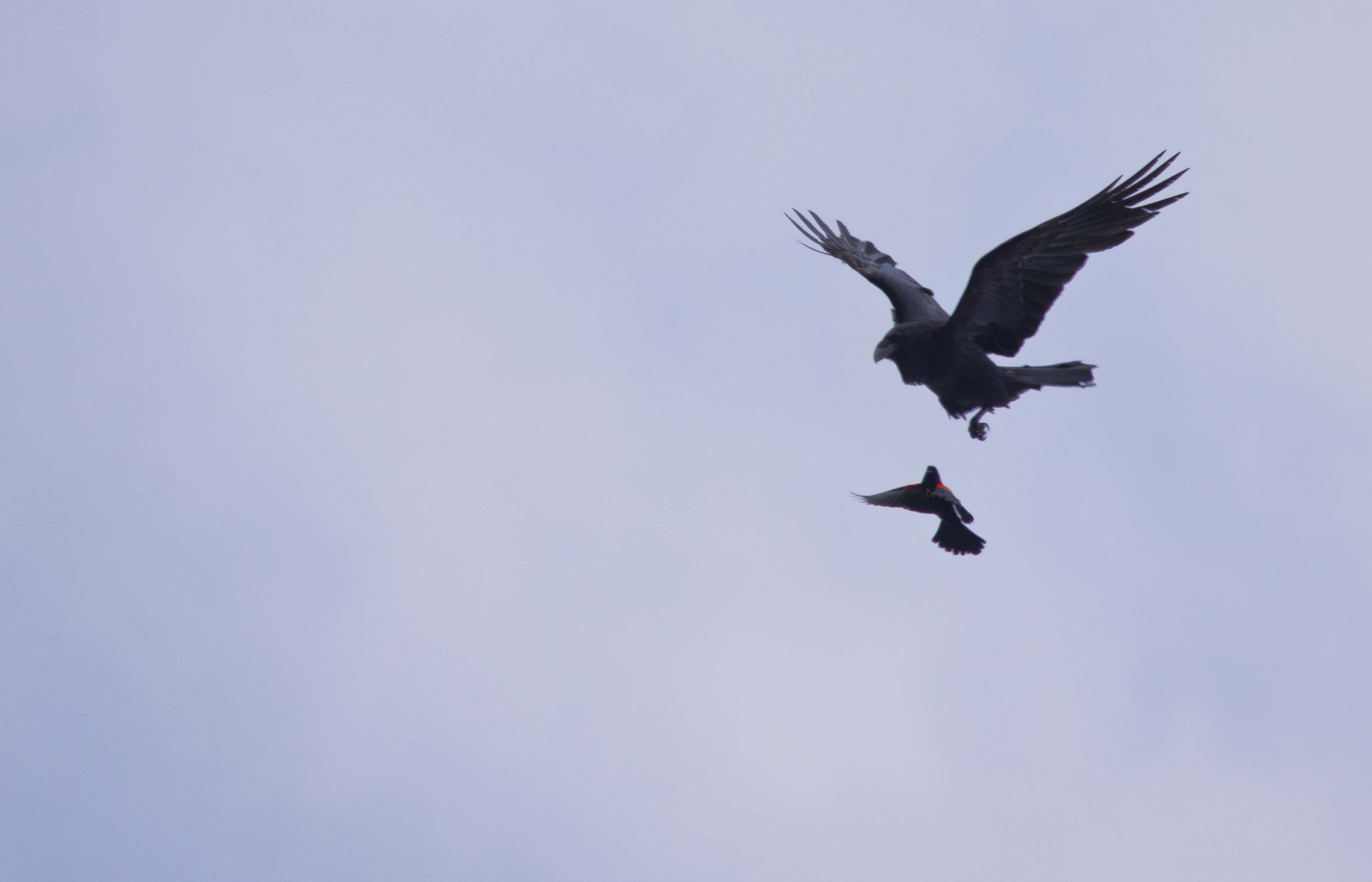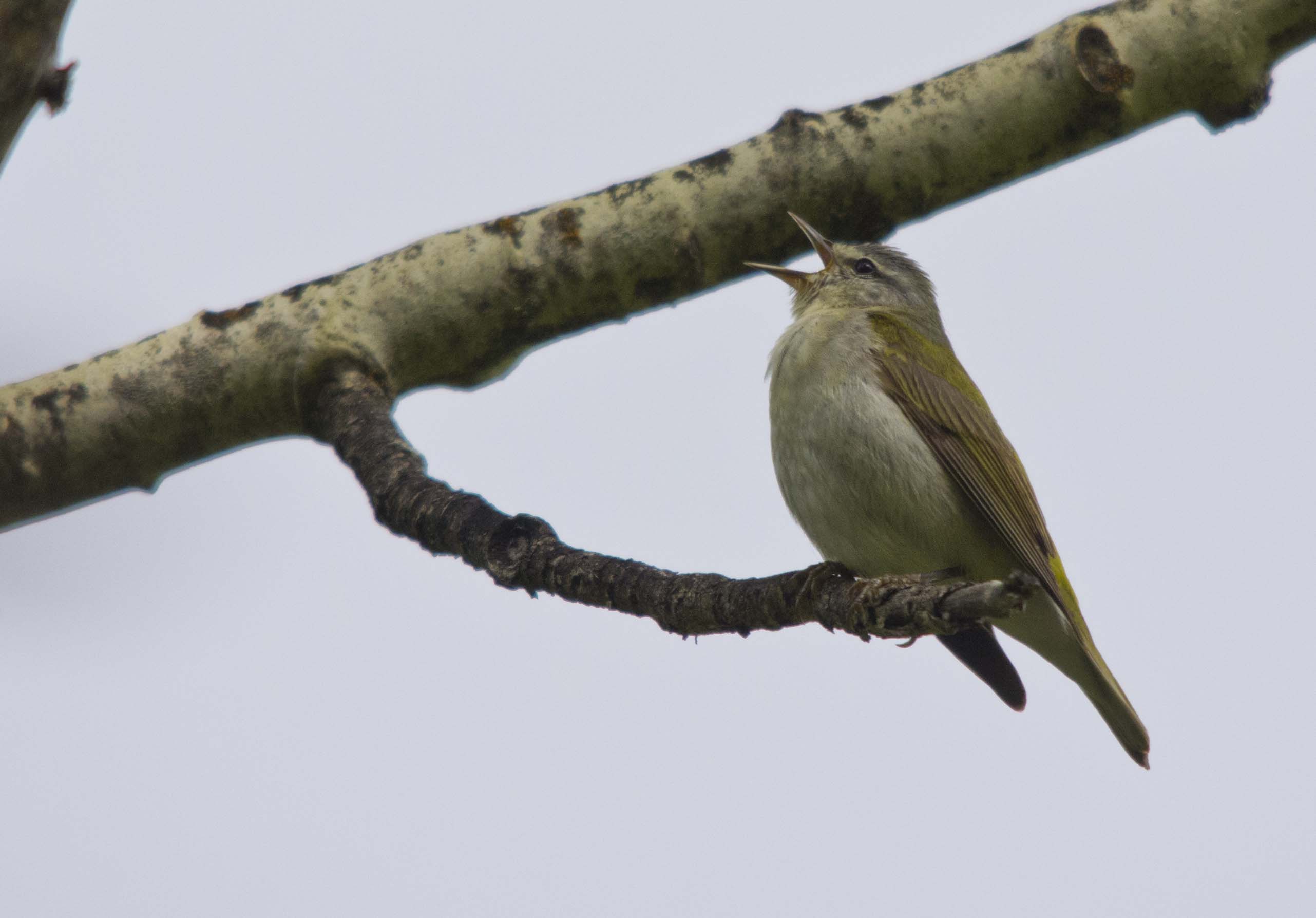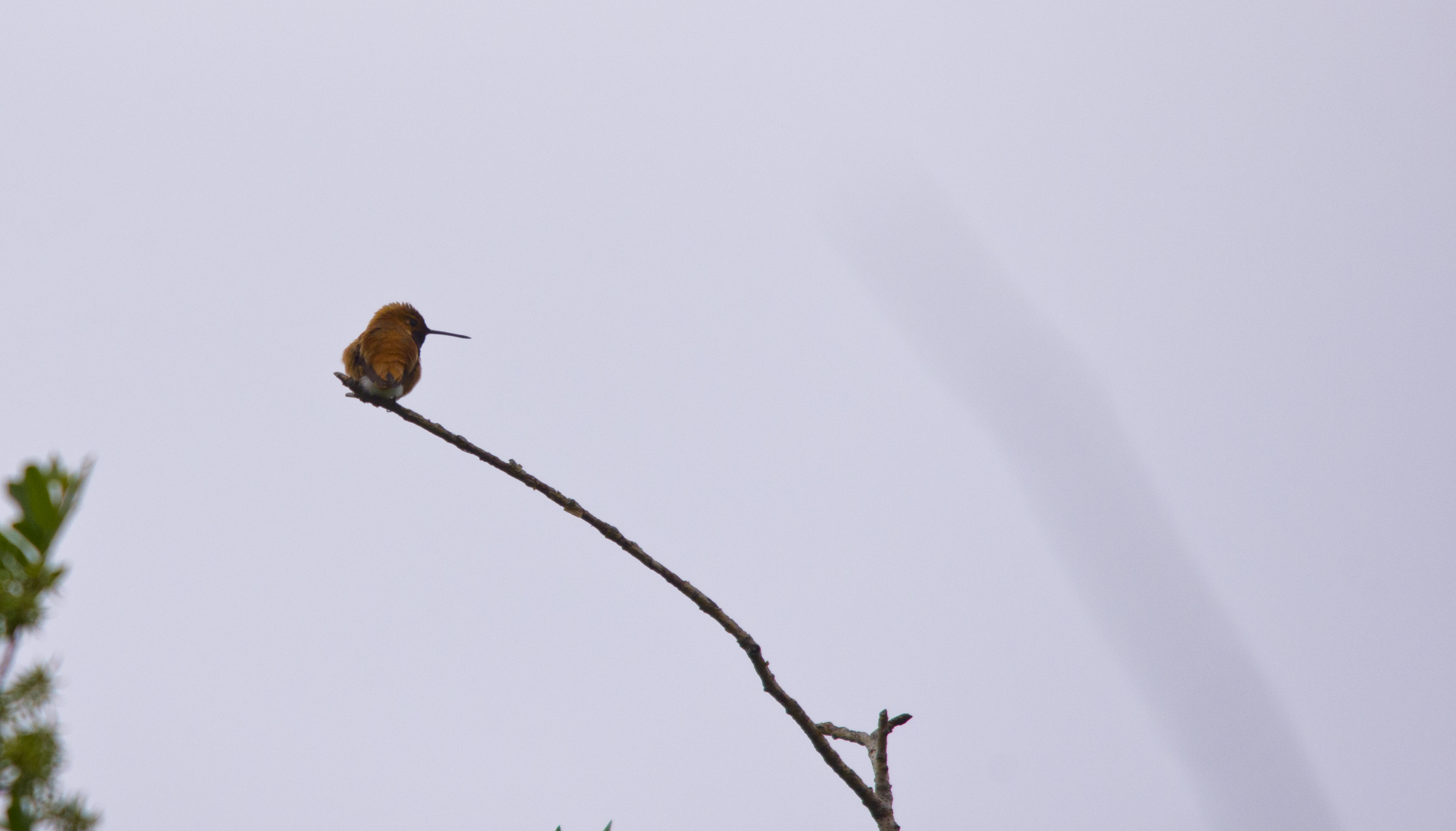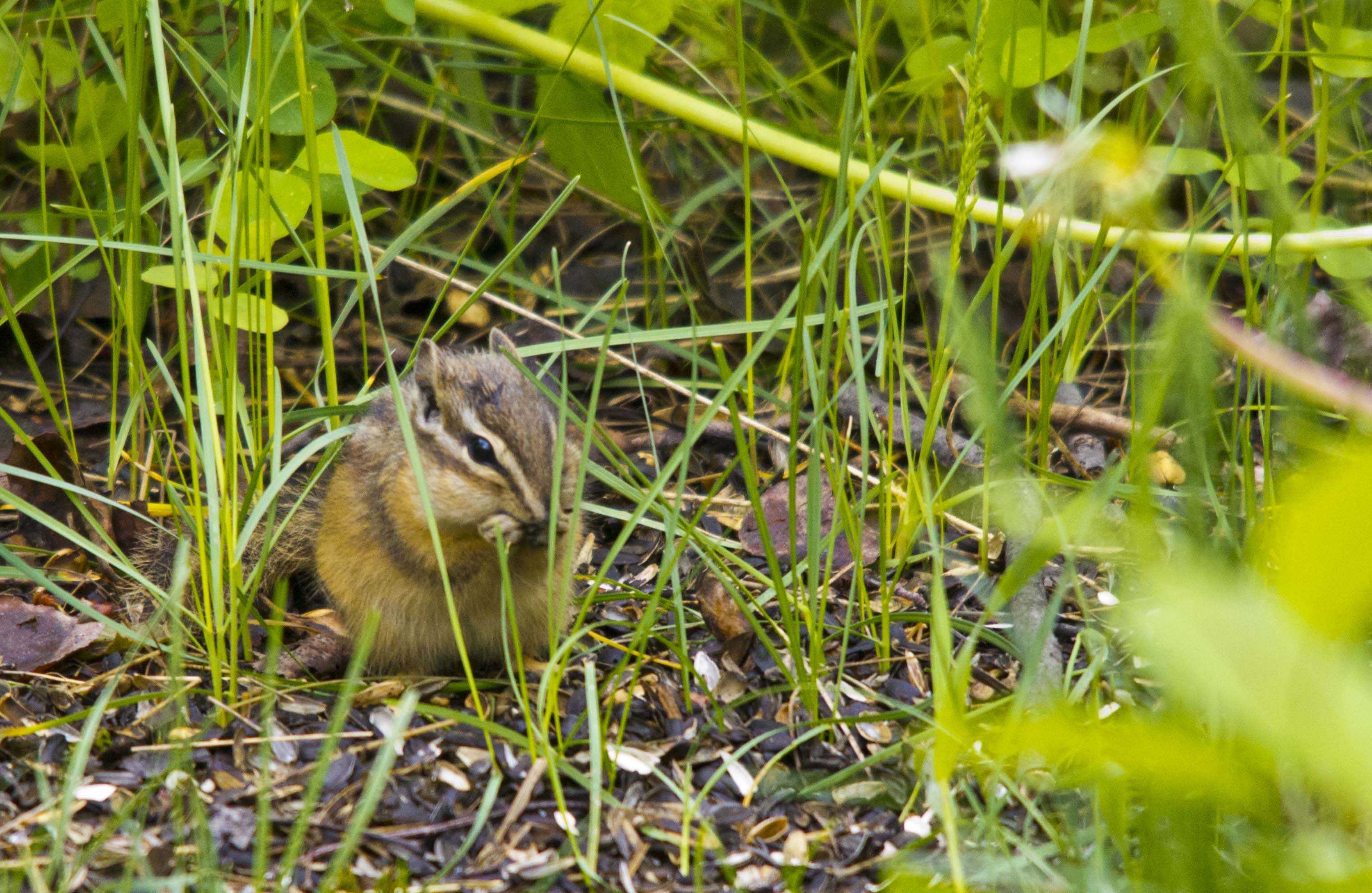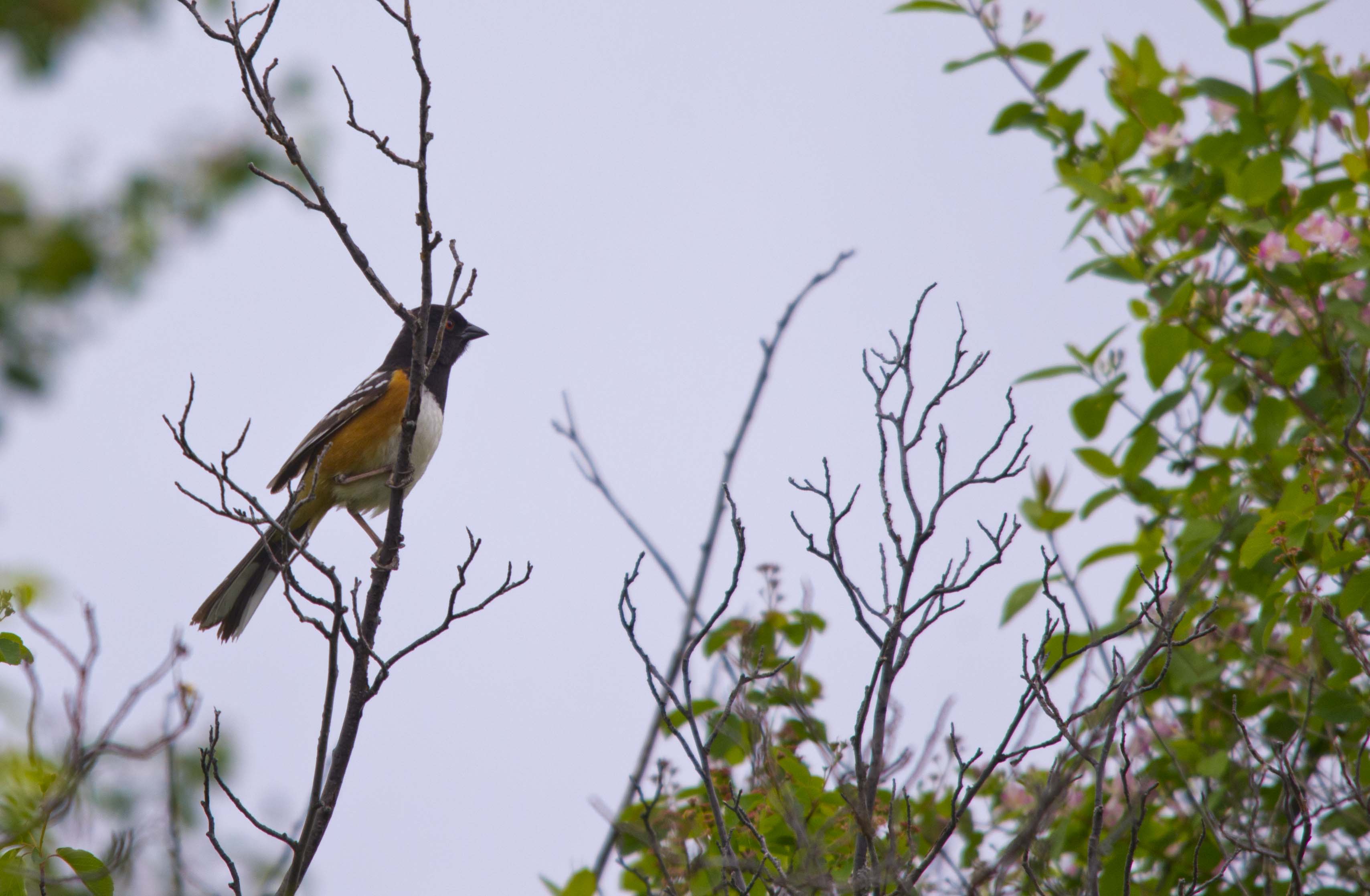While it has only been two weeks since our last visit to the Weaselhead, and only a week since my last post on it, that amount of time can lead to a huge difference in the birds one will see and hear in such a dynamic habitat. In addition to some of the birds we only heard on our last visit, a bunch of new arrivals made for an eventful day. I was thankful for that, because by the time I started with our group at 7:30, I’d already been out in the Weaselhead for almost 4 hours with the Dawn Chorus, listening for birds in the pre-dawn light, and had already accumulated a list of close to 60 species for the day!
A small contingent of six of us decided to visit the Weaselhead again, and while we didn’t expect too much in the way of new birds, we were very pleased with what we did find! One of our first new finds though was a pair of Least Chipmunks rummaging around in the freshly stocked feeders. This one actually sat inside while we watched him snacking on the sunflower seeds.
Looking out over the Elbow River towards the area where the Rufous Hummingbirds are, we spotted this little fellow much closer still, and snapped a few shots. When we confirmed the ID as a Ruby-throated Hummingbird, we edged closer and were able to get some very nice views and photos.
Down the hill we went, checking on the Rufous Hummingbirds, but not before finding a couple of the birds we’d heard well the past few weeks but hadn’t seen. Both the Cedar Waxwings and Gray Catbirds seemed much more comfortable sitting out in the open this week, and both allowed nice photo opportunities.
The old faithful pair of Eastern Phoebes under the wooden bridges in the Weaselhead were both present, but we got our first good looks at the male under the north bridge. After looking the wrong way for him for a few minutes, thought I’d look down over the edge, and sure enough, less than five feet away from me, there he was! Once he knew that I’d seen him though, he flew under the bridge and away from us to continue his hunting for the morning.
As we walked through the meadow where the Calliope Hummingbirds nest, we heard two separate Ruffed Grouses drumming, and as we neared our usual Boreal Chickadee grove, this male was drumming so close to us that I could actually hear the wind whistling through his flight feathers.
Onward and westward we went, staying away from the main pathway as much as possible, as apparently there was a race going on along the main central path… though we didn’t see or hear much in the way of runners. As we neared the pathway though, we did hear this Yellow-bellied Sapsucker calling and tapping on this dead snag… at least when he wasn’t preening himself.
A visit to the south ponds netted the calls of a Sora, a few American Wigeon on the ponds, more Least Flycatchers than one could count, and at least two Rose-breasted Grosbeaks calling from the treetops. This male allowed us a few minutes of viewing before flying off once again.
One notably absent species were the Cliff Swallows. Their nests were empty, and we weren’t the only ones who noticed. This Merlin was sitting near the bridge staring intently down at the nest colony, in hopes of snagging some lunch. He sat there until long after we left, waiting for his lunch “on the wing” to be delivered.
Our last new species of the day was actually one that is generally more evasive than the most secretive birds, but for some reason, this young Thirteen-lined Ground Squirrel was sitting on the ground nibbling away on grass and seeds when we nearly stumbled over it. We could have sat there all morning taking hundreds of photos of it, but this little ground squirrel was completely fearless!
Next week I’ll be away, but I will share some highlights from the May Species Count with you, along with some really great sightings we had at the annual Livingstone Ranch Golf Course bird count! Have a good week, and good birding!























